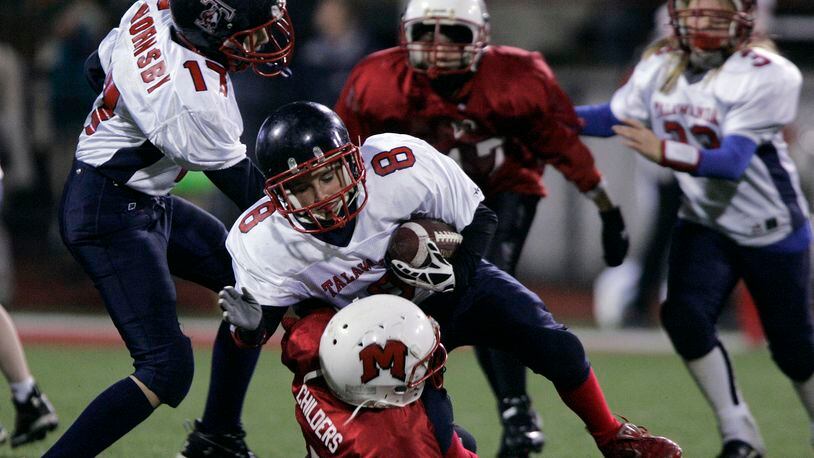And what does that future hold?
Each team will have six to nine players on the field, instead of 11; the field will be far smaller; kickoffs and punts will be eliminated; and players will start each play in a crouching position instead of in a three-point stance.
The proposed changes are a result of declining participation in youth football over the past few years and designed to provide an alternative to dropping contact altogether by going to flag football.
Explains Hallenbeck:
"All of this is about how do we do a better job, and a smarter job around the development of athletes and coaches in the game of football."
But story also quotes ESPN analyst (and former UD Flyer) Jon Gruden sounding a warning about the changes that have been made to the game since his NFL coaching career ended.
"There are a lot of geniuses out there that are trying to damage the game and ruin the game."
I tend to think both of them are onto something.
I don’t know if eliminating tackling until kids are in junior high or even high school is the answer. It could assuage the fears of some parents, but it also reinforces the idea tackle football just might be too dangerous to play at all.
I reject that notion, but it’s out there.
Some youth coaches have made the case learning proper technique at an early age is crucial to playing the game safely, but research confirms the common sense conclusion full contact presents potential problems for young brains still in the developmental stage.
Erring on the side of caution – especially at the youth level – probably makes the most sense. Unless it just drives more people away.
Ultimately, I’m not sure football is doing itself many favors by trying too hard to “get safer.”
RELATED: National Signing Day roundup
Something had to be done when the research about CTE began to emerge, but there will also come a time when we reach a point of diminishing returns.
It’s a dangerous game. There’s no way around it. That’s part of the appeal. Maybe a lot of it.
Parents worrying about their children’s safety on the football field — or anywhere else, for that matter — is nothing new.
I started playing tackle football in fourth grade, and I know my mother was a nervous wreck about it. That was 25 years ago.
Talk about long-term effects of concussions was minimal at that time, but by the time I graduated from high school there was at least a consensus that head injuries should be treated with great care and returning to play too soon could have grave consequences.
Many of the former players we read about now dealing with terrible health problems — or tragically choosing not to deal with them anymore — played before this was the case, unfortunately.
When Ohio State coach Urban Meyer says this is the safest time there has ever been to play football, he’s probably right.
We’ve taken great strides in dealing with concussions and trying to minimize them, but we’ve also conditioned a new generation of fans (including parents) to recoil at some of the hits we used to celebrate as football was growing into the most popular sport in the country.
Some of those hits – especially direct, intentional head shots and ones delivered with the crown of the helmet, which are as dangerous or more for the hitter as the hittee – should be eliminated, but there might be a point in which we round off too many of the game’s rough edges.
We need to protect players, but we also need to make sure they have a game they want to play and people want to watch.
About the Author
